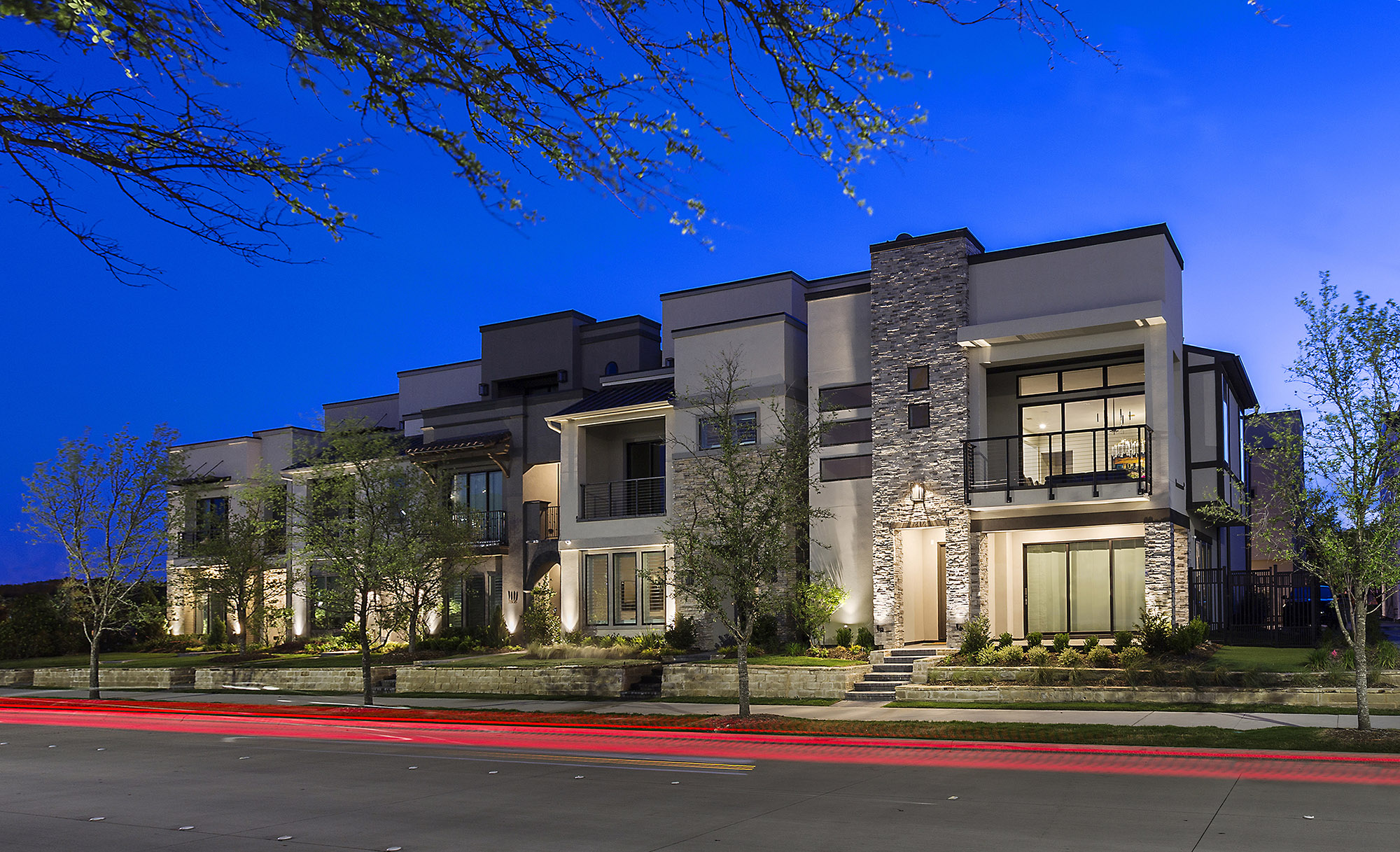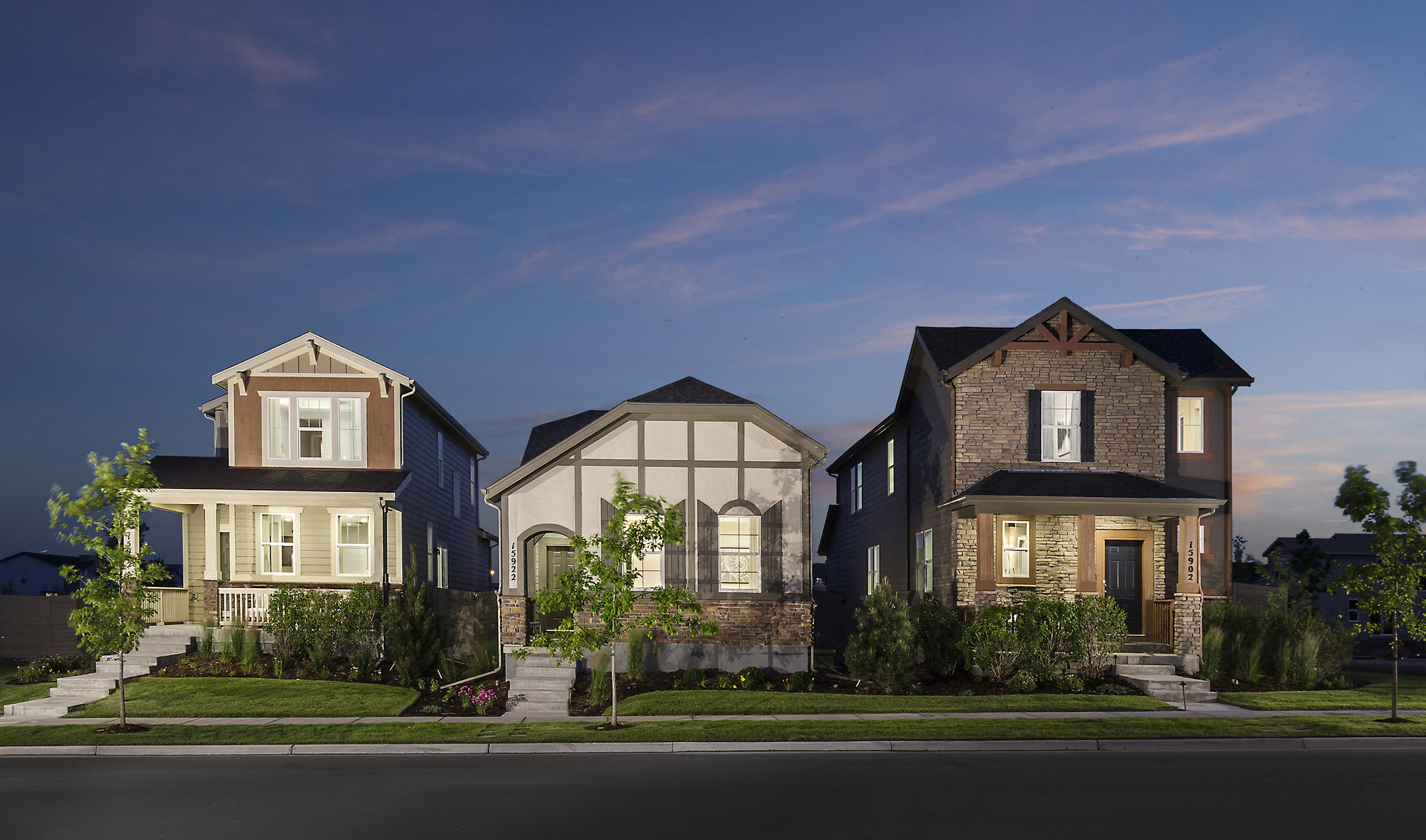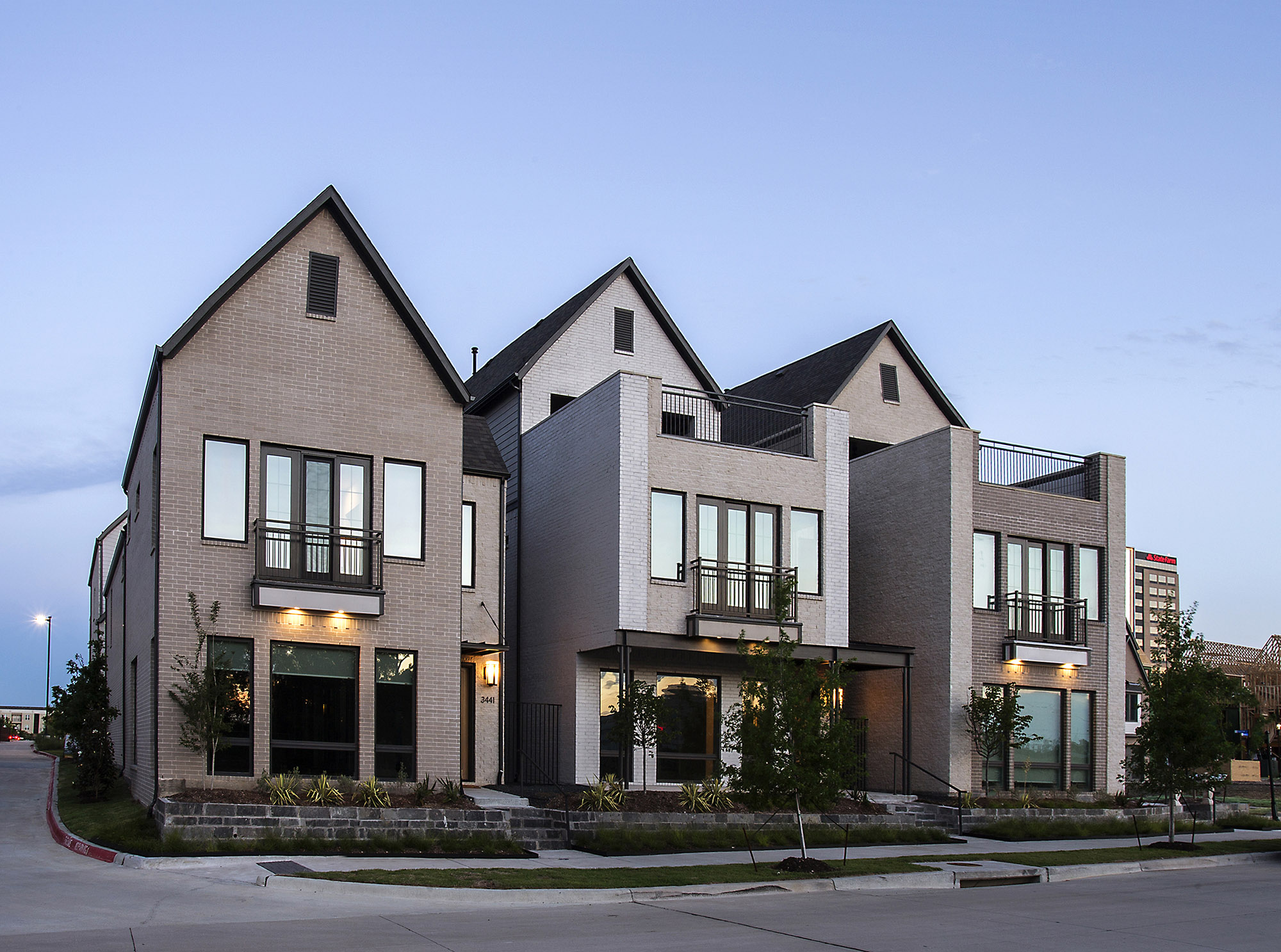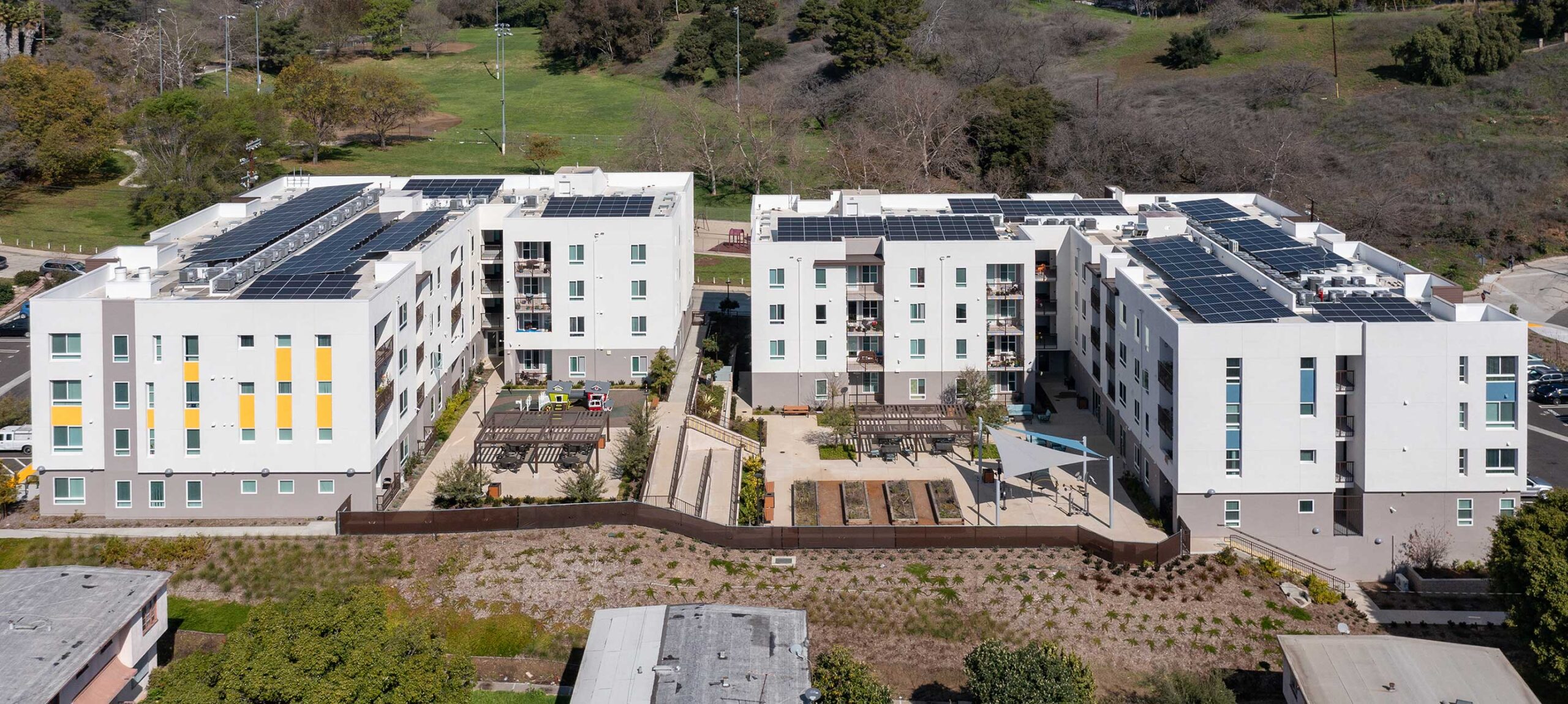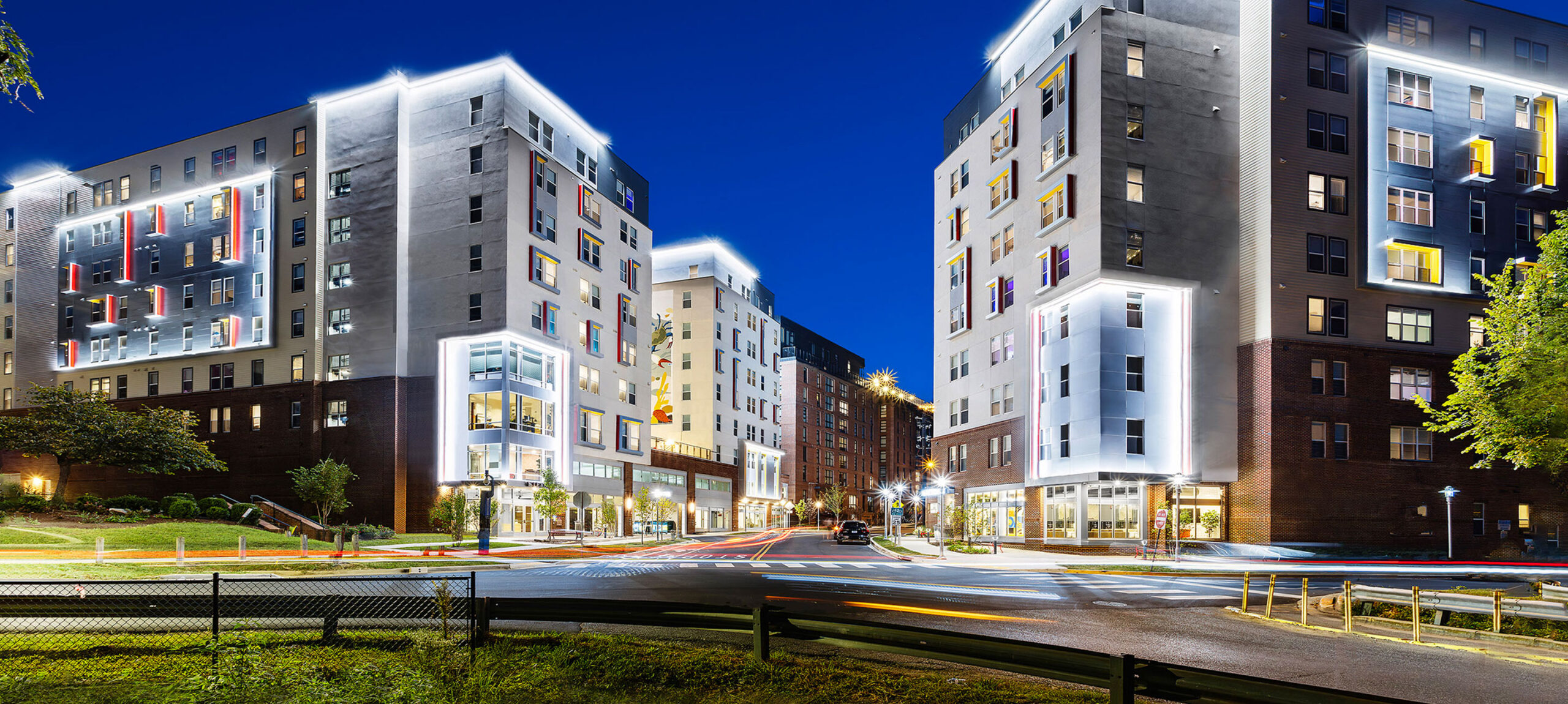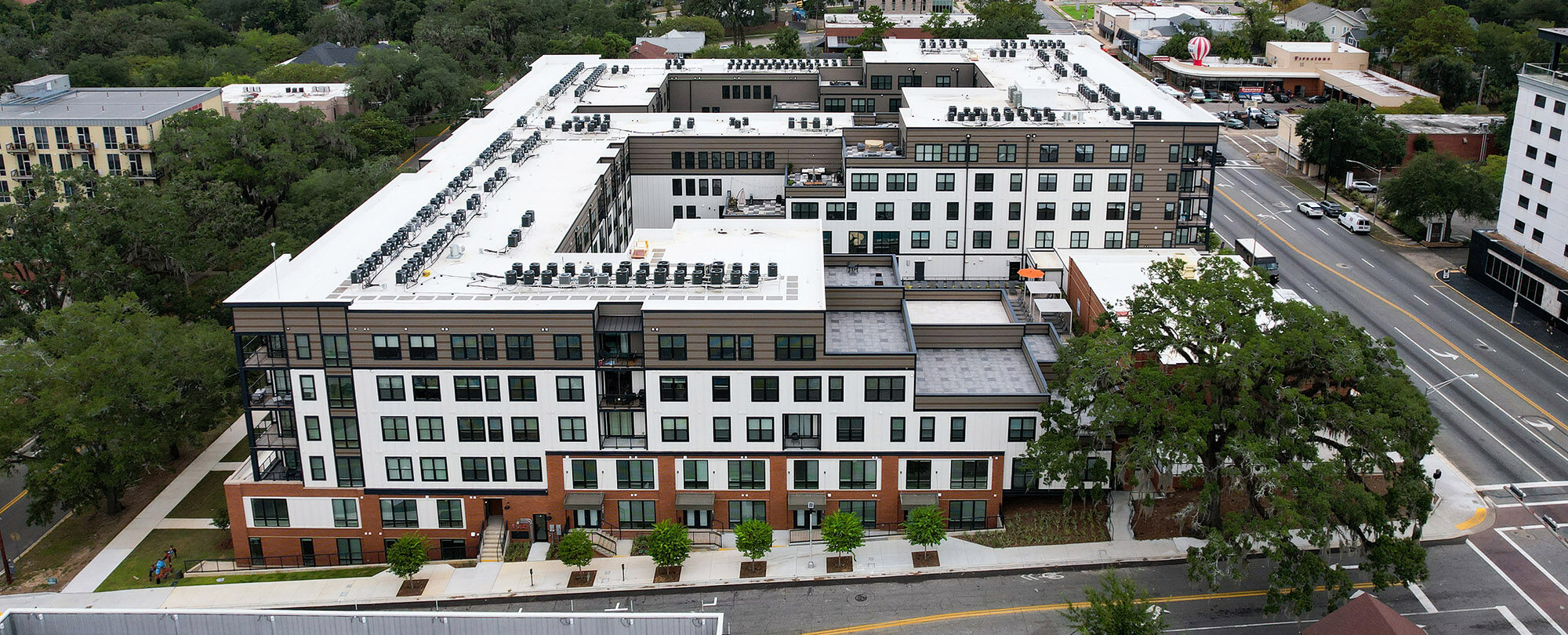Smaller lot sizes have become the norm in many growing communities. But these lot sizes can become a potential roadblock during architectural design. When designing plans that are sometimes as narrow as 20 feet wide, architects are challenged to make sure the homes don’t feel cramped. Throughout the entire process, remaining conscious of common narrow-lot problems and maintaining commitment to design details will help make the project successful. When done well, narrow plans can become spectacular homes that appeal to a variety of buyer profiles.
SMOOTH THE BUMPS WITH A CHARETTE
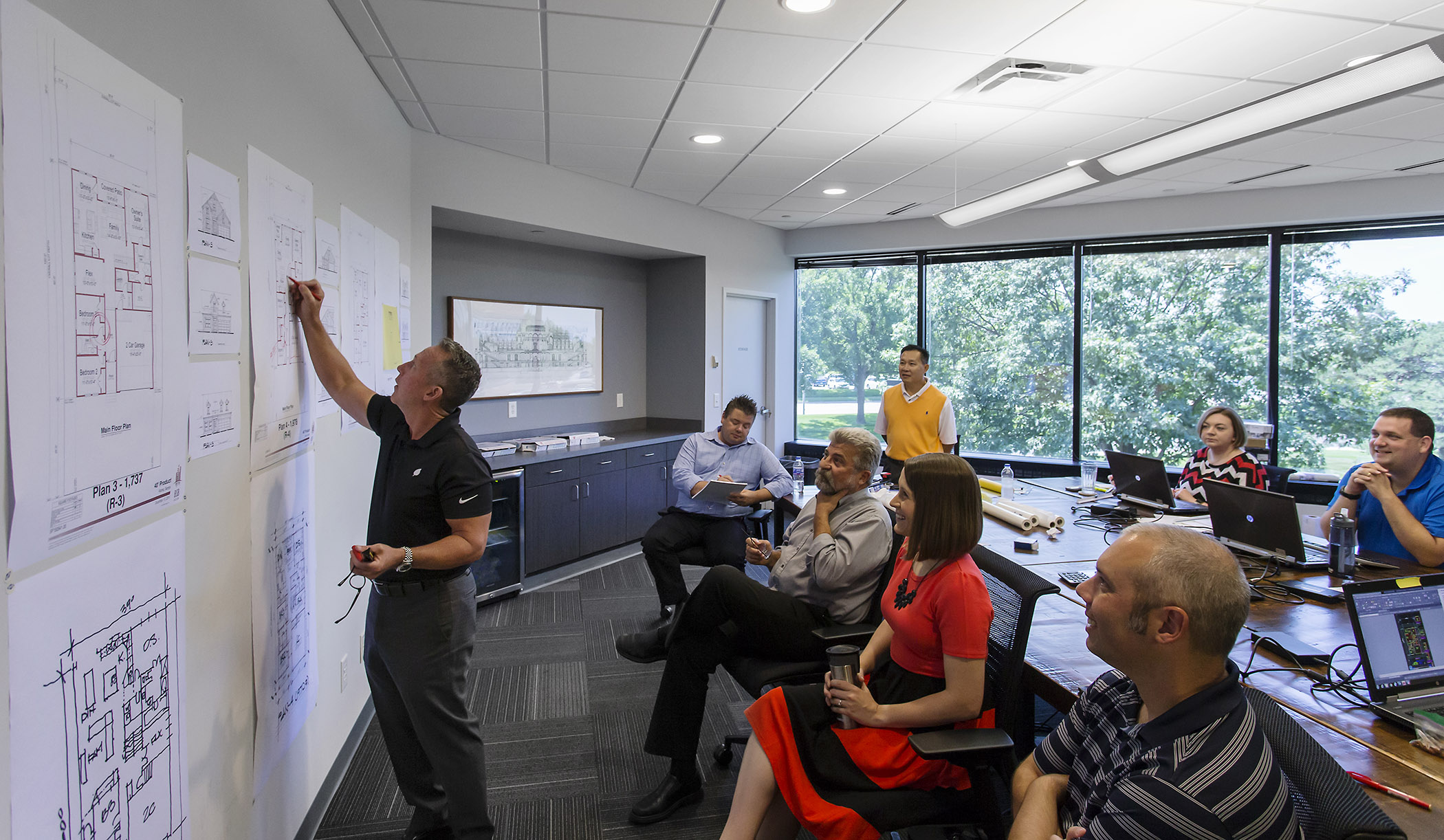 Trades were involved in the charette process and helped identify some potential problems that often arise during construction of narrow homes. For example, the architect wanted to make sure homes remained open and light-filled even after mechanicals and duct work were installed. Input from HVAC experts ensured the floor plan would work with the mechanicals (instead of just adding a chase someplace later on). The plans maintained their intended livability, and the design and construction time frames were actually shortened thanks to this collaboration.
Trades were involved in the charette process and helped identify some potential problems that often arise during construction of narrow homes. For example, the architect wanted to make sure homes remained open and light-filled even after mechanicals and duct work were installed. Input from HVAC experts ensured the floor plan would work with the mechanicals (instead of just adding a chase someplace later on). The plans maintained their intended livability, and the design and construction time frames were actually shortened thanks to this collaboration.
MOVING THINGS AROUND
A critical element to successfully designing a narrow lot home involves keeping the floor plan as open as possible while still allowing some separation between rooms. By pushing the kitchen back behind the stairs in the Villas at Legacy West, the space feels well-defined but remains visually connected to the main living area.
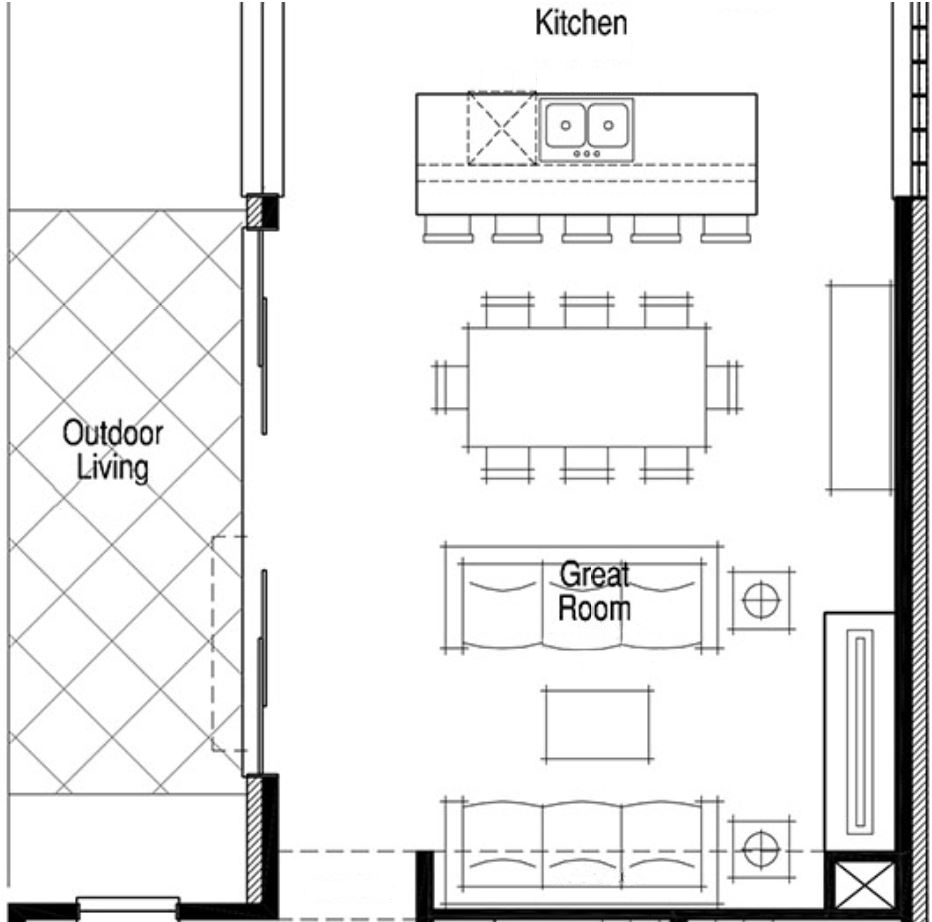 The Residences at CityLine are 3-story single family homes on narrow lots, but the main floor remains open and light-filled with immediate access to outdoor entertaining areas that expand the square footage. Yard space is often non-existent in narrow lots, so outdoor living areas are used to compensate. Buyers quickly forget about the lack of a private yard when they step onto the beautiful main-floor patio and walk-out decks on the upper floors.
The Residences at CityLine are 3-story single family homes on narrow lots, but the main floor remains open and light-filled with immediate access to outdoor entertaining areas that expand the square footage. Yard space is often non-existent in narrow lots, so outdoor living areas are used to compensate. Buyers quickly forget about the lack of a private yard when they step onto the beautiful main-floor patio and walk-out decks on the upper floors.
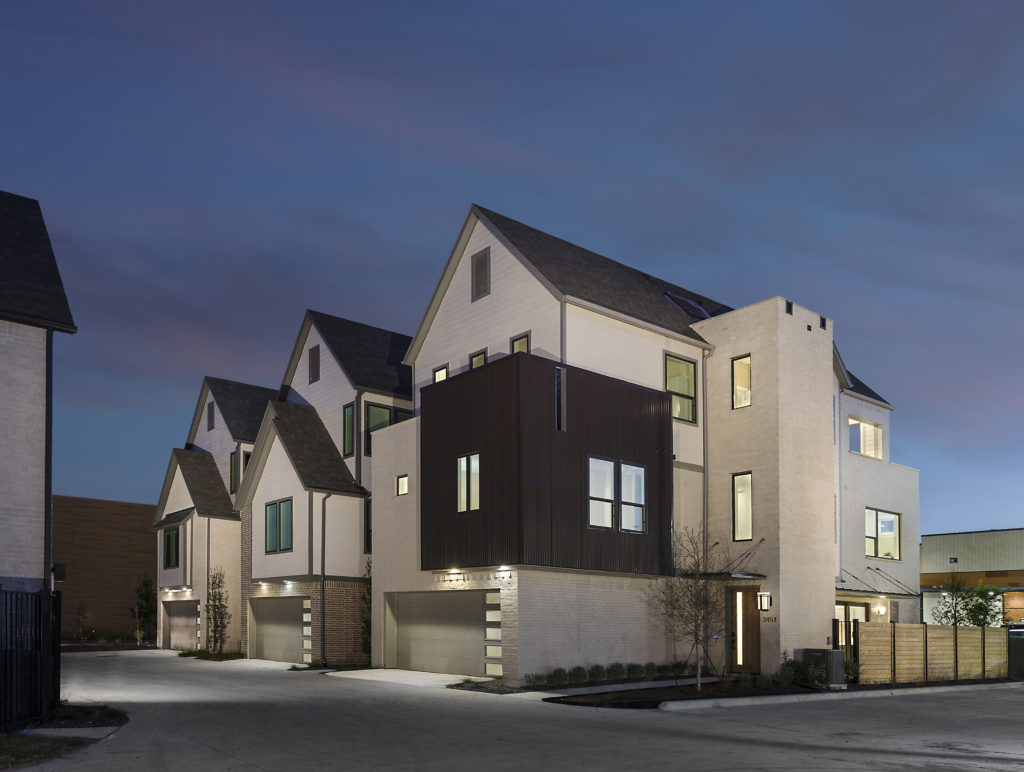 Rear-load garages for narrow lots are the best way to keep the focus on the streetscape. With as little as 20 feet of frontage, a two-car garage is the same width as the whole house, which is a tricky design challenge for front-load site plans. Moving the garage to the rear creates flexibility in room layout, floor plan and the exterior elevation.
Rear-load garages for narrow lots are the best way to keep the focus on the streetscape. With as little as 20 feet of frontage, a two-car garage is the same width as the whole house, which is a tricky design challenge for front-load site plans. Moving the garage to the rear creates flexibility in room layout, floor plan and the exterior elevation.
Although narrow homes may be close to each other, small side yards can still be leveraged to introduce natural light. Strategically placing windows on the sides of the homes allows for more light while still giving privacy from the neighbors.
APPEALING STREETSCAPES
Bump outs or varying colors can add definition to the exterior of the home so it becomes distinctly individual despite the close proximity of neighboring units. The Residences at CityLine employ strong gable roof patterns to differentiate each home, and the verticality actually makes them feel larger. Curb appeal is essential to strong sales, so using design techniques to impart a sense of grandeur to front elevations can reduce any negative connotation about very narrow lots. Inside, ample natural light will help interior spaces feel larger, so windows are key elements of the elevation design.
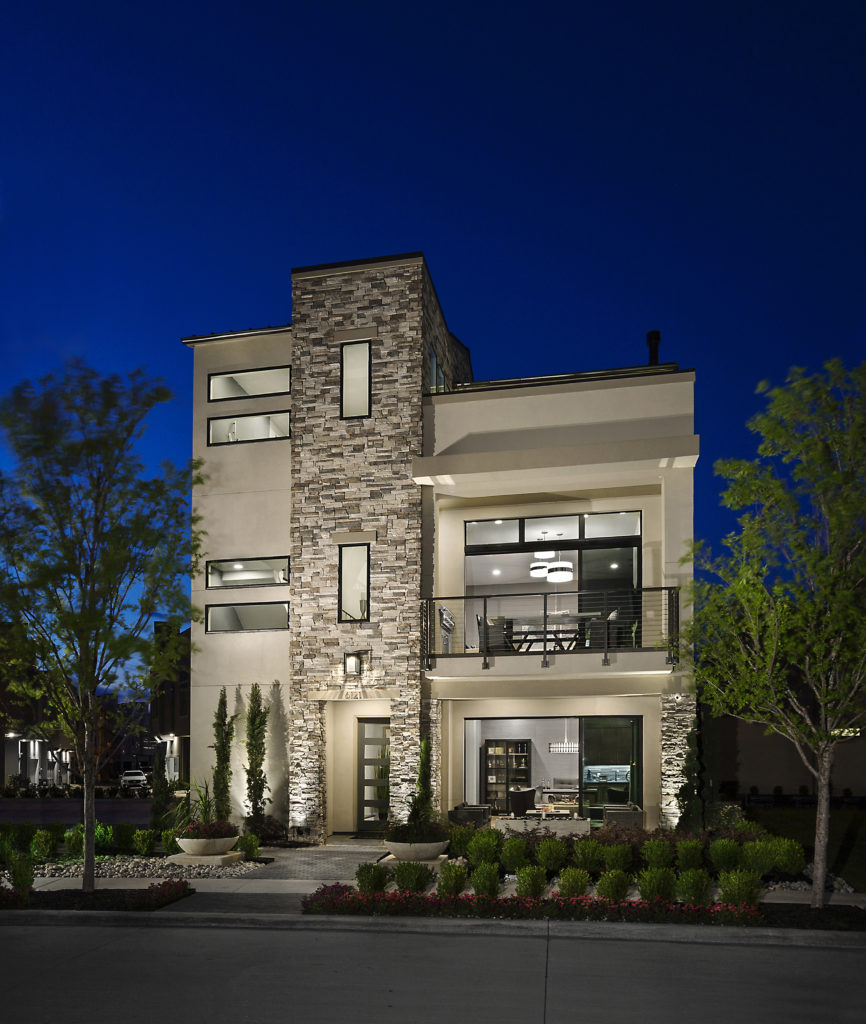 MAKING INFILL FIT IN WHILE STANDING OUT
MAKING INFILL FIT IN WHILE STANDING OUT
When new product must fit into an area with preexisting design, careful execution is essential.The Villas at Legacy West are part of a luxury infill development that incorporated some traditional Texas design features while standing out from the crowd through an emphasis on modern details. Vertical and horizontal lines create a uniquely urban feel, but the traditional materials are reminiscent of more historic styles. This helps the project blend with the existing community and adds immense appeal to the streetscape.
